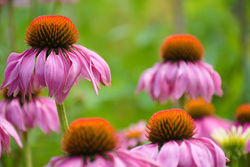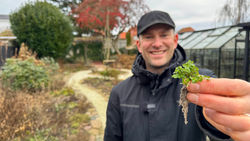The best seed starting trays for every gardener
- Lars Wildes
- Jan 17, 2023
- 5 min read
Updated: Jan 28, 2023
Not only do seed trays help protect your seeds while they germinate, but they also make it easy to transport and care for your young plants.
Great. So where do you start?
In this guide, I’ll go over everything you need to know about shopping for seed trays, including different types and sizes, materials, and features to look for.
From beginner gardeners to natural green thumbs, with a little bit of research and a dash of creativity, you'll be well on your way to finding the perfect seed trays for your gardening needs.

Searching for seed starting trays online will give you over 13 million results. Combine that with the different styles and prices, and a lot of beginner gardeners get too overwhelmed to even continue. Who can blame them?
Instead of getting lost in the noise, here are my top choices for the best seed starter trays online. And I’ll include the 100% free tray that you probably already have in your kitchen trash.
Skip ahead to #4 to see what I’m talking about.
1. Biodegradable seed starting pots

These little pots from Wiok are 100% biodegradable. They’re made from natural pulp and peat and are compostable and recyclable — all of my favorite ‘ables’.
Because the trays are made with natural materials, you can cut out individual cells or use the whole tray for one type of flower, plant, vegetable or even succulent. And the best part is that there’s no need to prick out your seedlings. Just plant the whole cell in the ground and you’re set for spring.
2. Seed tray with air-regulating cover

These seed trays from Delxo are designed to promote air flow and just the right amount of humidity that germination and growing seedlings need.
Each of the plastic cells has drainage holes, and you get a tray to put under to catch water — that’s great for anyone growing plants or veg on their windowsill. The biggest plus of this collection of trays is the clear top with adjustable air vents, letting you regulate how much air goes in and comes out.
3. BPA-free plastic seed starting trays

This type of tray is the go-to for most gardeners around the world… and for good reason. Each cell is just the right depth for young seedlings and with drainage holes already built in, the risk of overwatering is decreased.
The main drawback to plastic trays like this is that it’s hard to cut and use individual cells. If you’re not planting that many seeds, go for an option with less cells.
4. Plastic meat trays

These are the seed starting trays that I use. They’re basically free if you consider that I was going to just recycle them after we used the meat. And they keep this material from ending up in a landfill or in the recycling bin.
Plastic meat trays are also shallow enough to keep me from over watering and drowning my seeds and seedlings. If you want to give it a try, remember to pop a few drainage holes in the bottom before you add any soil.
What is a seedling tray used for?
A seedling tray is a tray with small compartments or cells where seedlings are grown before they’re transplanted (pricked out) into a larger container or planted in the ground outside.
Seedling trays are used to start seeds indoors or in a greenhouse, and they provide a controlled environment for the seedlings to grow. That means that it’s easier for you to control the water, heat and sunlight for each tray and type of plant.
Seedling trays are typically made of plastic or peat, and they can be filled with different types of seed-starting soil, such as soil, compost, or a soilless mix.
The size and shape of the cells in a seedling tray can vary, and some seedling trays have a clear plastic cover to help maintain consistent humidity and temperature.
How to shop for the best seed starting trays
It’s easy to assume that all seed starting trays are the same. But there are a few factors that affect how you’ll use them.
The material
Usually, seed trays fall into 2 categories: biodegradable or reusable.
Reusable plastic seed starter trays are a great choice because they’re lightweight, reusable and cheap. If you use plastic meat trays as I do, then they’re practically free and with a quick wash, you can reuse them for many seasons to come.
The biggest downside to standard reusable plastic seed trays is that you have to either prick out each seedling when they’re ready to plant outside or remove each plug (the seedling as its root system in the soil) to plant on.
Biodegradable seed starter trays can be planted directly in the soil without removing the seedlings. That means that your little plants are less likely to experience any serious root shock.
In one way, this saves you a ton of time. But they do cost more than reusable seed trays. You can also make your own biodegradable seed trays with old toilet paper tubes.
The seed tray’s size
How many seeds are you planting? Ask yourself that and it’ll help you decide how many cells (the little ‘cups’ in the tray) that you need.
If you’re growing indoors, go for seed trays that can fit on your windowsill. If space is an issue, do look at plastic meat trays, they’re usually small enough to fit on a windowsill and are easy to rotate every other day to keep your seedlings from getting too long or leggy.
You’ll also need to look at the actual depth of each cell. Most seed tray cells have a depth between 1.5-2.5 inches (38-63 mm). I don’t suggest choosing a tray with cells deeper than 3 inches (76 mm) because it makes it harder for the water to drain out.
You Asked — We Answered
Why should you use a seed starting tray?
You need to use a seed starting tray (or shallow tray of some kind) because it’s the safest way to make sure that you don't overwater your seeds.
If you bury them in a regular size pot — even a small one — you run the risk of drowning them and you waste soil having to fill up a larger container.
How many seedling trays do you need?
It depends on how many seeds you want to plant. If you get a seed starting tray with 252 cells, that means that you can plant 252 seeds.
What should you put under seed starting trays?
There are several things you can put under seed starting trays to protect your surfaces and make it easier to move the trays around:
A tray or shallow container: Place your seed starting tray on top of a tray or shallow container to catch any water that may drain out of the tray. This protects your surfaces from water damage and makes it easier to move the tray around.
A seed starting mat: Seed starting mats are designed to be placed under seed starting trays to regulate the temperature and moisture levels of the soil. These mats can be placed on a flat surface and plugged into an outlet to provide gentle, bottom-up heat to the seedlings.
A seed starting rack: A seed starting rack is a stand that holds multiple seed starting trays. These racks can be placed on a flat surface and usually include wheels for easy movement. Some seed starting racks also have built-in grow lights, which can help provide additional light to your seedlings.
How do I remove seedlings from trays for planting?
To remove seedlings from a plastic tray for planting, turn the tray upside down and gently squeeze each cell to remove the seedling. If you’ve planted in a plastic meat tray, you’ll need to use a tongue depressor or a blunt knife (like a butter knife) to lift each seedling out.
What is the ideal temperature for healthy seedling growth?
The ideal temperature for seedlings varies based on the type of plant.
For most seedlings, aim for 65-75 degrees Fahrenheit (room temperature, 18-23 degrees Celsius).
Does starting seeds save money?
100% yes. Starting your own seeds is way cheaper than buying seedlings or mature plants. And it’s an activity that your whole family can be a part of.






Comments